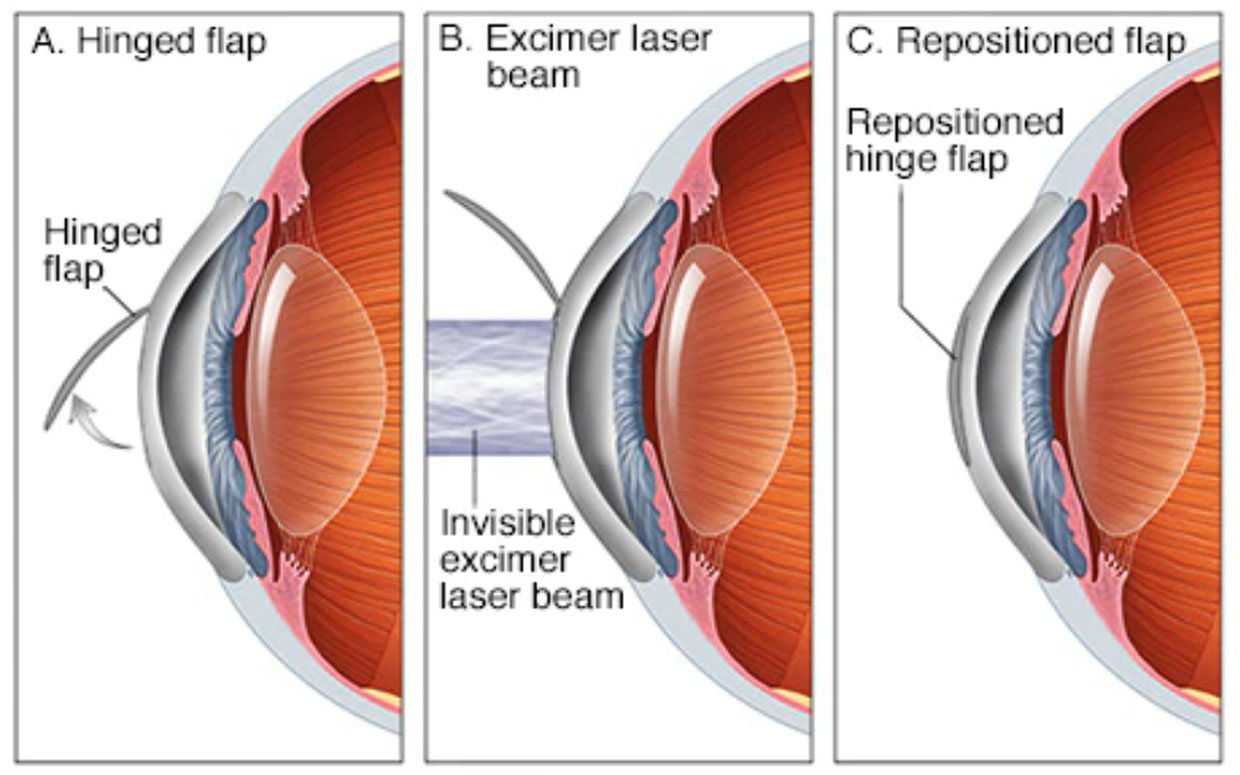LASIK Eye Surgery
LASIK eye surgery is the best known and most commonly performed laser refractive surgery to correct vision problems. Laser-assisted in situ keratomileusis (LASIK) can be an alternative to glasses or contact lenses.
During LASIK surgery, a special type of cutting laser is used to precisely change the shape of the dome-shaped clear tissue at the front of your eye (cornea) to improve vision.
In eyes with normal vision, the cornea bends (refracts) light precisely onto the retina at the back of the eye. But with nearsightedness (myopia), farsightedness (hyperopia) or astigmatism, the light is bent incorrectly, resulting in blurred vision.
Glasses or contact lenses can correct vision, but reshaping the cornea itself also will provide the necessary refraction.

Why would you need a dental implant?
LASIK surgery may be an option for the correction of one of these vision problems:
- Nearsightedness (myopia). When your eyeball is slightly longer than normal or when the cornea curves too sharply, light rays focus in front of the retina and blur distant vision. You can see objects that are close fairly clearly, but not those that are far away.
- Astigmatism. When the cornea curves or flattens unevenly, the result is astigmatism, which disrupts focus of near and distant vision.
Refractive Surgery
If you have a refractive error, such as nearsightedness (myopia), farsightedness (hyperopia), astigmatism or presbyopia, refractive surgery is a method for correcting or improving your vision. There are various surgical procedures for correcting or adjusting your eye’s focusing ability by reshaping the cornea, or clear, round dome at the front of your eye. Other procedures involve implanting a lens inside your eye. The most widely performed type of refractive surgery is LASIK (laser-assisted in situ keratomileusis), where a laser is used to reshape the cornea.
Correction of Refractive Errors Using Modern Surgical Procedures
The process for placing a single tooth implant involves surgery. Before undergoing surgery, an initial consultation is needed to determine your candidacy. We closely examine your mouth, checking for signs of cavities and periodontal disease. X-rays allow us to examine your bone to determine if you will need a bone graft before your implant is placed. We also go over your medical history and lifestyle habits.
Refractive surgery, a subfield of ophthalmology, is defined as the surgical correction of refractive errors of the human eye. It has become a highly specialized area in the last few years. Ophthalmic surgeons now have a multiplicity of refractive surgical methods at their disposal for the individualized correction of refractive errors. Techniques of refractive surgery on the cornea and lens are now available that reliably fulfill the standard criteria of safety, efficacy, cost-effectiveness, and predictability of the refractive outcome (1, e1).
The learning objectives of this article are that the reader
should become familiar with the different techniques of refractive surgery now available for the correction of refractive errors of the human eye,
should know the indications for each technique according to the guidelines of the German Commission for Refractive Surgery,
and should be able to inform patients about the contraindications and possible complications of each technique.
This CME article is based on a selective review of the literature and on the authors’ personal experience of more than 6000 refractive surgical procedures.




